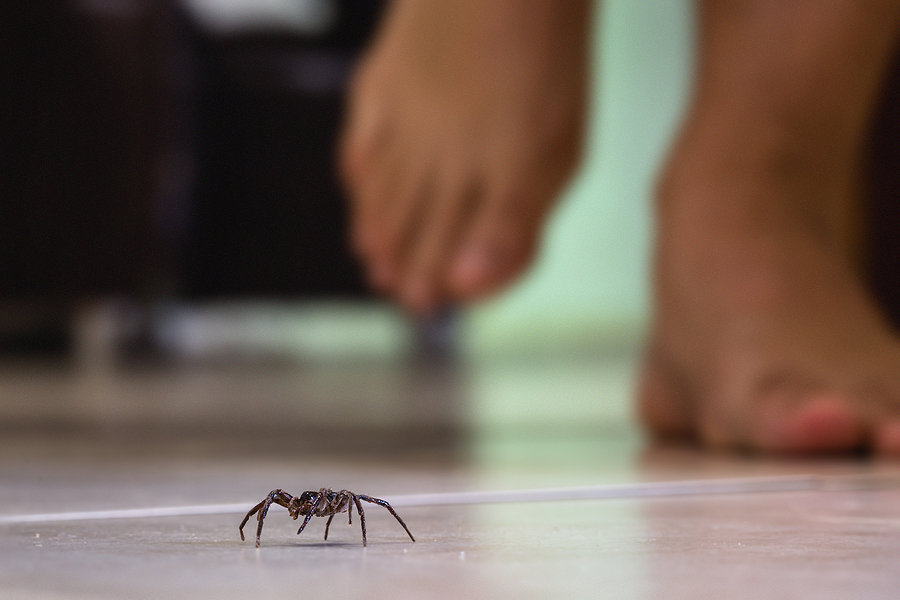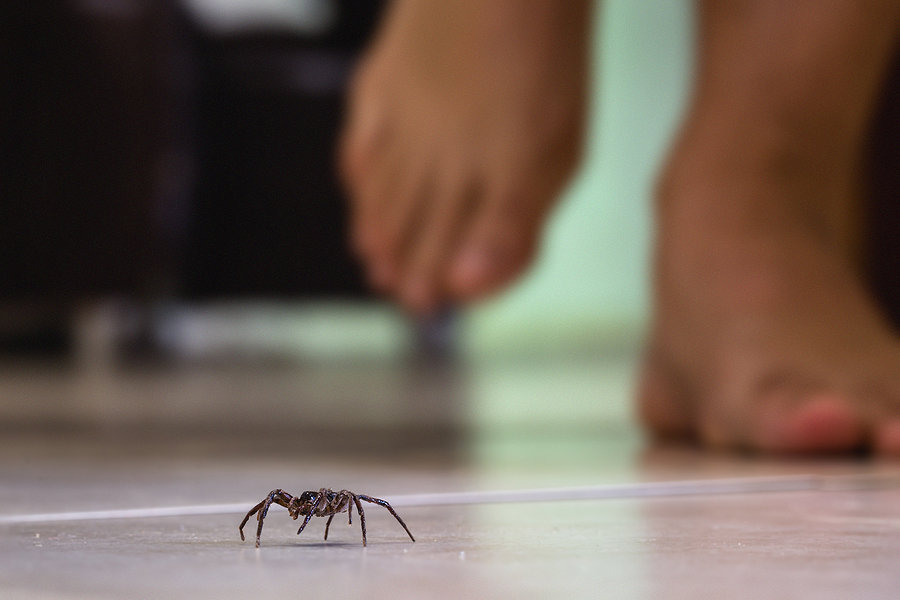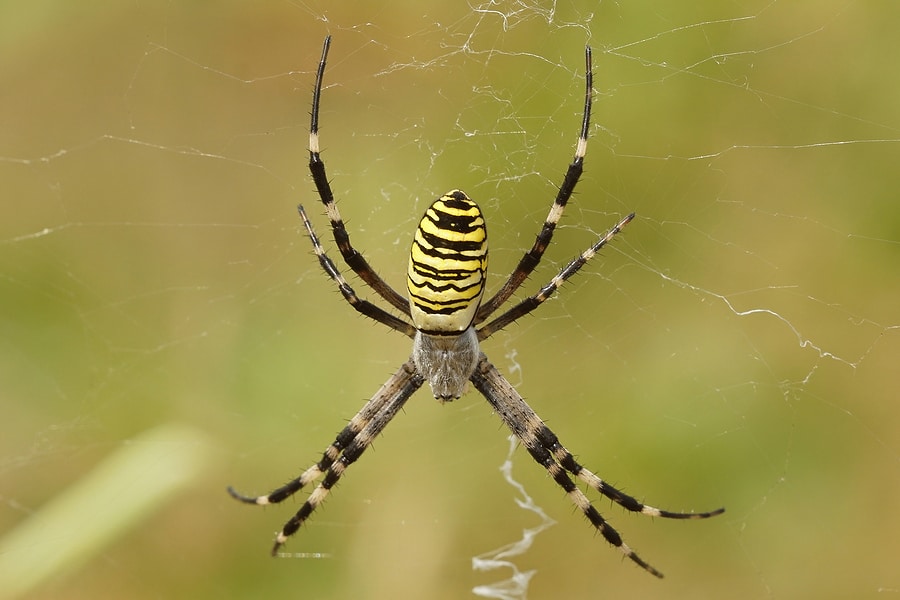READY TO GET STARTED?
REQUEST A FREE ESTIMATE
Fill out the form below or call (888) 466-7849 for a free, no-obligation estimate.

Spiders are considered year-round pests, but they seem to come out in full force during the summer months. Some common spiders you may encounter this summer include wolf spiders, orb weavers, garden spiders, house spiders, brown recluse spiders, and black widow spiders. While most of these are harmless, brown recluses and black widows can be dangerous to humans with their venomous bites.
The spiders you see in the summer most likely aren’t just now making their way into your home; there’s a good chance they’ve already been hiding out inside for a while. They will commonly emerge in large numbers in the summer for two main reasons:
Seeing a spider here and there inside your home is usually nothing to worry about; they can sneak in through open windows, doors, etc. Seeing them in large numbers, however, can indicate a much bigger problem. Spider infestations can be the result of:
Having a spider infestation in your home can leave you with webs everywhere, the risk of spider bites that can be painful and potentially dangerous, and the possibility of other pest infestations, as well. You can keep spiders out by:
If you have a problem with spiders, contact your local pest control company for a thorough inspection and treatment plan.
Controlling Birds During the Summer Months

Although spiders are considered a year-round pest, they become more visible and active in the spring. Overwintering pests like spiders emerge as the weather warms up to lay eggs for the approaching season. Spiders are predators, preying on smaller insects for food. They are usually not a huge threat to humans with only a few venomous species in our area. In fact, they can be quite beneficial to have around your home, working as a form of natural pest control by eating other insects you may have around.
If the thought of sharing your home with spiders creeps you out, don’t fret! Here are some spider prevention tips you can use this spring to help keep these pests out.
Protecting Your Pets from Fleas and Ticks
What Happens During the Bee Relocation Process?

The Joro spider, also known as Trichonephila clavata, is a member of the recognizable orb weaver family. These particular spiders are characterized by their large size (up to 3 inches in length with their legs extended) and yellow and blue-black striped backs with red undersides. Joro spiders are known for constructing large, wagon-wheel shaped webs that are a golden color. These webs can be several feet in length.
Joro spiders are native to Asia, particularly Japan, China, Korea, and Taiwan. In 2014, the first instance of the Joro spider in North America was confirmed in North Georgia. Subsequent sightings have been confirmed as far away as Greenville, South Carolina. It is unclear how and when these spiders first arrived here in Georgia but researchers believe they are here to stay. In fact, researchers have confirmed their presence in at least 25 counties in the state.
Joro spiders are not considered harmful to humans or pets. They will bite when provoked but are not considered a threat. Joros are beneficial to have around as they are one of the only species known to eat adult brown marmorated stinkbugs. They also help keep mosquito and other nuisance pest populations in check. Joro spiders do have predators in our area; both birds and wasps will eat them.
The jury is still out on whether or not there will be any long-term ramifications on local ecosystems. One thing all the researchers agree on is that the Joro spider is likely here to stay.
Are Carpenter Ants Active During the Winter?
Why Identifying Spiders is Important for Prevention

Nothing says “Halloween” like spotting a few cobwebs around the house! While it’s always fun to see cobweb decorations during this time of year, it’s not as fun having to deal with them year-round. Since the temperatures have cooled off, many spiders are looking indoors to inhabit a warmer environment. It’s important to understand common types of spiders in order to provide the best treatment if they’ve infested your home.
Brown Recluse
The brown recluse spider is light to dark brown, with a signature brown violin shape on its backs. If threatened, these spiders will bite, which can be painful and leave an open sore. If bitten, some can experience fever, restlessness, and difficulty sleeping. Brown recluse spiders can be found in debris and woodpiles. If they’ve snuck inside your home, they can often be found under furniture, inside storage items, in baseboards, closets, and crawlspaces.
Wolf Spider
Wolf spiders are dark brown with paler stripes or markings and long, spiny legs. These spiders are large and hairy across their bodies. While these spiders will bite, it’s rare that they do and are not a significant threat to humans. Inside homes, wolf spiders tend to stay near or on the floor, especially along walls and under furniture where they chase their prey instead of capturing them in their webs. If outside, they like to inhabit firewood piles, leaves, yard debris, and stones.
Common House Spider
House spiders can vary in color but are usually yellow to brown with elongated abdomens. Although not a threat to humans, they are a nuisance to have in the home as they can produce and leave behind webs throughout the house. They can often be found in ceiling corners, under furniture, and inside closets, basements, garages, and crawlspaces. If outside, you will commonly find them spinning webs around windows, under eaves, and near light sources that attract food.
By recognizing each spider species and knowing where they most often inhabit, you can utilize the correct preventative measures to eliminate the chance of an infestation. Check out some of these easy do-it-yourself spider prevention tips:

Orb weaver spider is the collective name for a group of spiders in the family Araneidae. This diverse group of arachnids are famous for the large, Halloween-inspired webs they create. Are orb weavers venomous? Should we be concerned when we encounter one in our yard or garden? The short answer to these questions is yes, they are venomous but no, they aren’t dangerous to humans. Let’s take a closer look at this fascinating species of spider.
Orb weavers are large spiders that are most commonly seen in late summer and early fall. They eat small insects like flies, moths, wasps, mosquitoes, and beetles. Around your home, orb weavers can often be found near outdoor lights, in tall grass and weeds, on tree branches, fences, walls, and bushes. There are 180 species of orb weaver spiders in North America alone. They are found throughout the world on every continent except Antarctica. Many species of orb weavers are bright yellow or orange in color while others are a dull gray or brown.
Orb weavers are not hunters or wanderers. They are typically nocturnal spiders and will build or repair their webs at night. Many species will tear down and eat their webs at dawn to both consume the dew that catches on them for hydration and to keep larger animals like birds from tearing down their webs. Orb weaver webs are large, circular grid webs that look like the spokes of a wagon wheel connected by concentric circular strands. These webs can measure up to 3 feet in diameter. These spiders will sit in their webs and wait for prey. Once captured, they will bite and paralyze their victim and warp them in silk to consume later.
While orb weaver spiders can bite and are venomous, they are not considered a threat to humans. In fact, they are beneficial to have around your home as they eat other nuisance pests and help keep their populations under control. These spiders are very docile and non-aggressive. They will usually flee when threatened but will bite if necessary. The bite of an orb weaver has been compared to a bee sting.
While they don’t threaten humans or structures, they can be unsightly and their webs can be a hindrance if built in a high traffic area. If you have a problem with spiders or any other pests, contact your local pest control company for assistance with pest control and prevention.
What to Know About Overwintering Pests
Protecting Your Business’s Outside Space